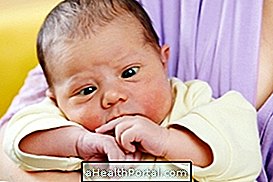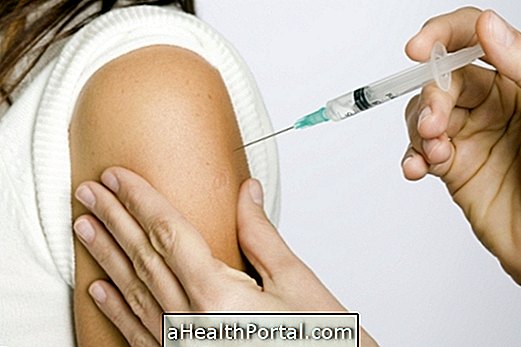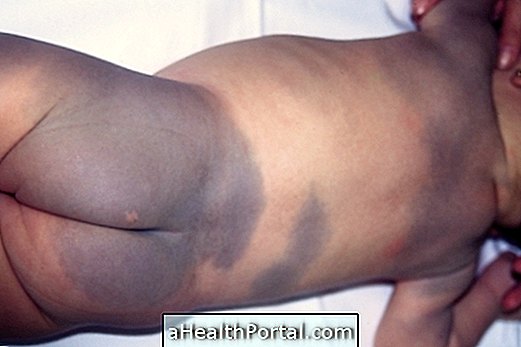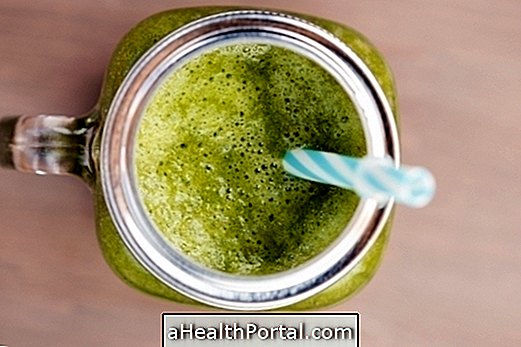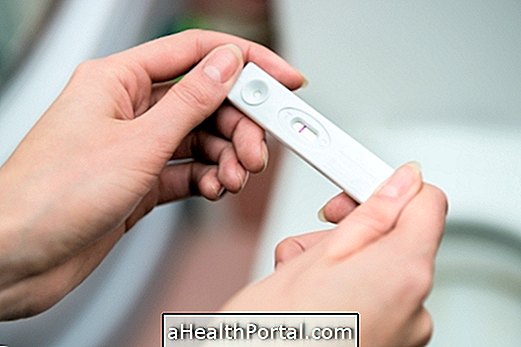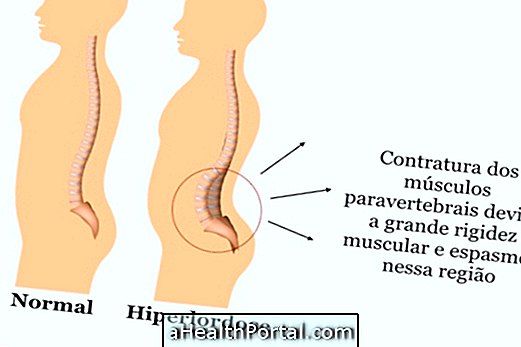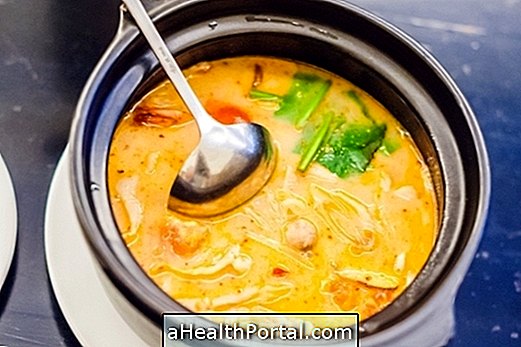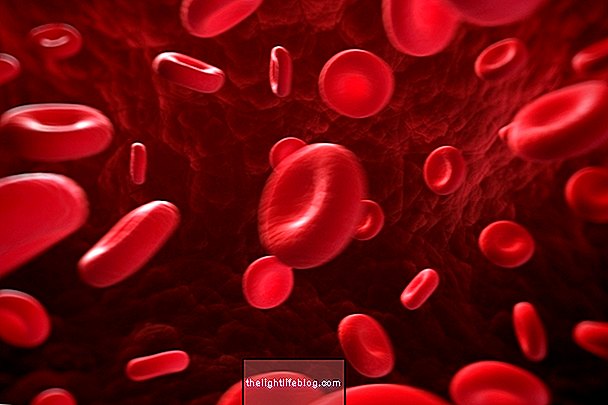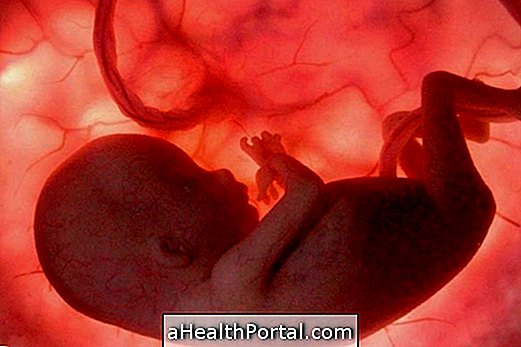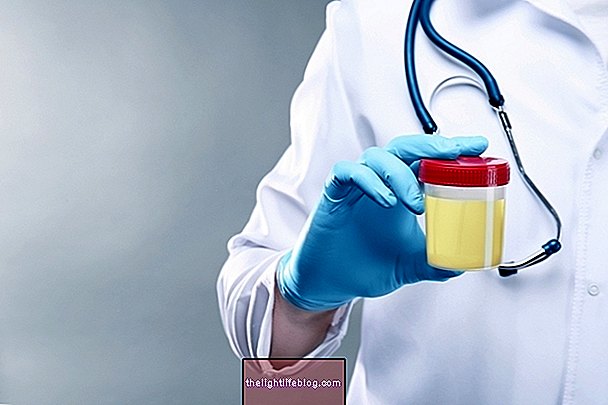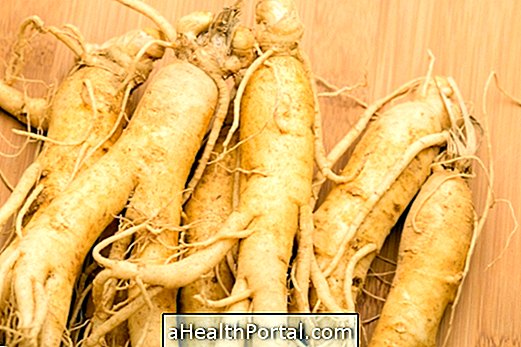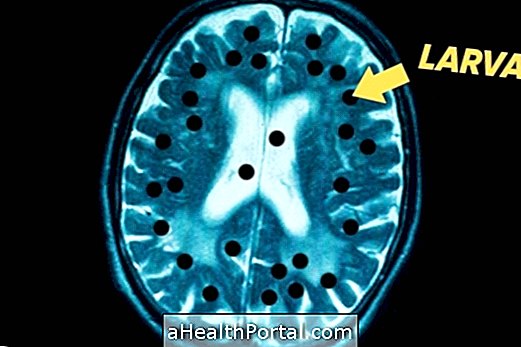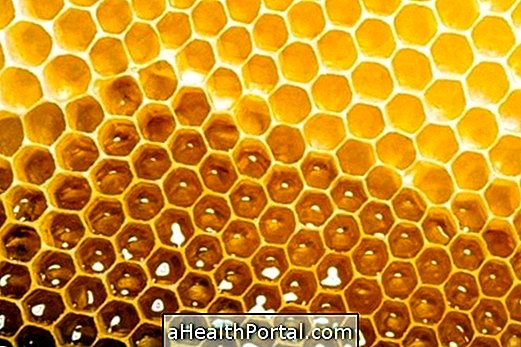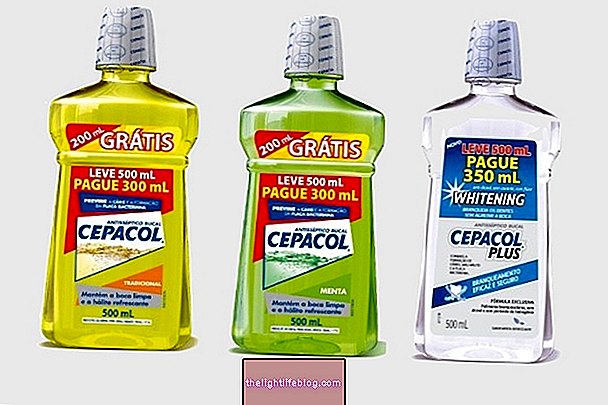The most common and least serious cause of reddish or very dark color in the baby's stool is related to the consumption of foods like reddish like beets, tomatoes and gelatine. The coloring of these foods may leave the stools with a reddish color, but that is not related to the presence of blood, although it may confuse the parents.
In general, finding blood in the baby's stool is not a serious situation, but if the baby is having diarrhea with blood or has a fever of 38 ° C or higher, call the pediatrician promptly because it may be something more serious and you may need to do exams.
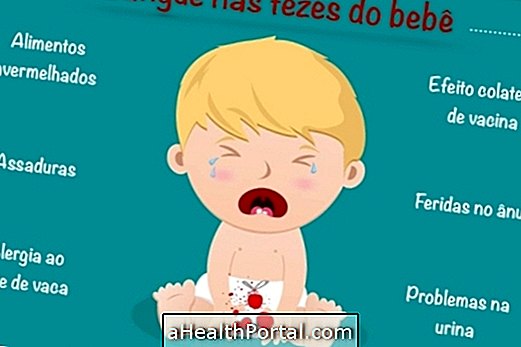
The blood in the baby's stool can also be caused by situations such as:
1. Constipation
Most common when the baby takes a bottle or after starting a varied diet with few fibers, fruits and water. The stool can be separated in the form of balls and much pain, causing a lot of pain at the time of evacuation.
- What to do : Offer more water for your baby and if he has already begun diversified food, offer more fiber-rich foods like grapes and papaya, for example. A good tip is to give a fruit at the end of each meal, including breakfast and snacks. Check out here 4 Homemade laxatives for infants and toddlers that can also be a good help.
2. Anal fissure
It can occur as a result of constipation, and happens when small fissures in the anus appear, which bleed when the baby poops.
- What to do : The secret is to make stools softer because by passing through the anus they do not cause sores. Offering water, natural fruit juice and foods that loosen the gut is a good strategy. In more severe cases, when the baby stays for more than 5 days without evacuating, a child laxative, composed of glycerin may be introduced to empty the intestine.
3. Food allergy
Sometimes babies who are breastfed may have an allergic reaction to certain foods that the mother ingests, such as cow's milk and its derivatives or soy. In this case the stool may present with buds or strips of blood, leaving the poop of the baby darker and smell more intense.
- What to do: It should be shown to the pediatrician as soon as possible, and in case of suspicion, the mother should stop consuming cow's milk, its derivatives and also everything based on soy. Know some foods that can cause or worsen food allergy.
4. Rash
The baby's skin becomes very sensitive and the rash can also bleed, looking like the baby's stool has blood, but in this case the blood will be bright red and easy to identify, especially when cleaning the baby.
- What to do: Avoid wiping your baby with moist tissues, preferring to wipe with a piece of wet cotton in the warm water. Wear ointment on diaper change is especially indicated when the skin is injured, but it can also be used as a form of protection because it creates a barrier that prevents direct contact of the stool with the baby's skin. However it is not necessary to put a lot of ointment so that the sensation is not strange. Just leave the area slightly white. See some examples of rash ointments.
5. Cracking the mother's nipples
Sometimes the breastfed baby can swallow a little blood if the mother's nipples are injured. These small cracks despite always causing pain and discomfort are not always large, and although they do not show a large amount of blood, may be enough to cause changes in the baby's stool. In this case, the stool becomes darker and smelly.
- What to do: You can continue breastfeeding your baby normally, even as this helps in healing the cracked nipple. Learn How to Heal the Cracked Nipples for Breastfeeding Without Pain.
6. Diarrhea with blood
In the case of prolonged diarrhea, which lasts for more than 2 days, small irritations, fissures, or even blood may appear in the baby's stool, and in case of diarrhea with blood in the baby one of the possible causes may be Salmonella infection.
- What to do: You should follow your pediatrician's instructions to stop diarrhea by avoiding foods that hold the intestine before the 3rd day of diarrhea, because if it is being caused by viruses or bacteria, diarrhea should be these microorganisms of the intestine. But it is important to avoid dehydration which is very dangerous for babies, and so always after an episode of diarrhea one should offer 1 glass of water, juice or milk to keep the baby properly hydrated.
7. Mini menstruation
Newborn girls may have blood in the diaper, but this is not related to feces, but to the hormonal changes that occur in your body, generating a mini menstruation, which passes in a few days. This is more frequent in the first few days or at most in the first 2 weeks. The amount of blood in the diaper is very small, and certain areas may become only pink.
- What to do: It should be shown to the pediatrician so that it verifies if it is really this 'mini menstruation' or if it is some other factor that needs treatment. If this false menstruation is even, it does not need any specific treatment, and it lasts only 1 or 2 days, not being in great quantity, nor in all the changes of diapers.
There are also other causes of blood in the stool of the baby and so you should always tell the pediatrician that this is happening so that he can check if there is a need to do some examination to find out the cause and what treatment will be necessary. Only those who make the diagnosis of what is causing the presence of blood or mucus in the baby's stool are the doctor.
Warning signs to go to the doctor immediately
If there appears to be blood in the baby's feces or urine, it looks smart and healthy, you can make an appointment with your pediatrician to let them know what's going on. But it is recommended to get medical help as soon as possible if the baby shows blood in the diaper and has:
- Very crying, may indicate colic or abdominal pain;
- No appetite, refusing feedings or food;
- If you look prostrate, grin and do not want to interact, with an apathetic appearance;
- If you have vomiting, fever or diarrhea.
In this case the pediatrician should observe the baby to identify what is causing these symptoms and indicate the most appropriate treatment.
